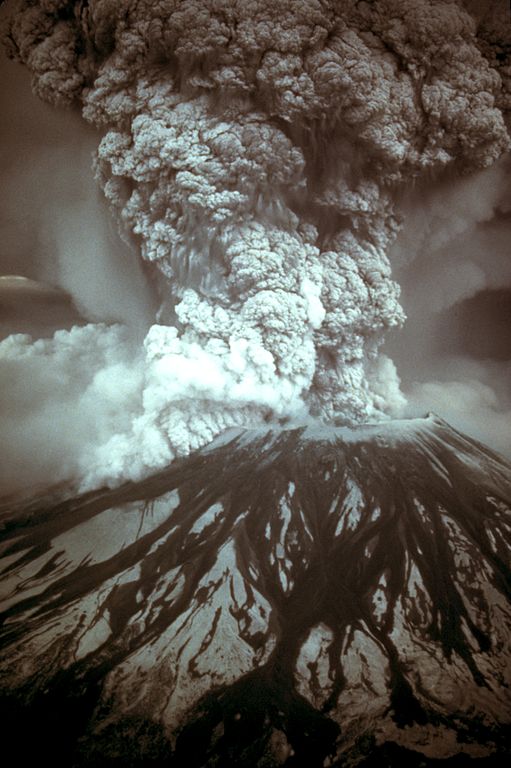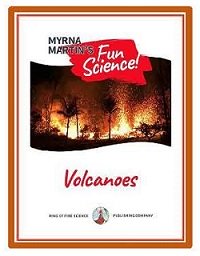What is a Composite Volcano?
Composite volcano
Tall conical shaped mountains
These volcanoes form tall, conical shaped mountains. Composite volcanoes are steep sided volcanoes that reach great heights on the continents. The volcanoes expel a variety of stiff pasty lavas that form thick lava flows. Another name for a composite volcano is stratovolcano.
Pyroclastic flows form during an eruption
These lava flows alternate with explosive eruptions of tephra. The explosive eruptions also produce pyroclastic flows that travel down the sides of the volcano at hurricane speeds. Pyroclastic flows often destroy everything in their path.
Earth's Active Volcanoes
Most of the Earth's active volcanoes have formed a ring around the Pacific Ocean. There are 452 stratovolcanoes in the Pacific Ring of Fire. The volcanoes are located in volcanic arcs on the continental side of subduction zones.

1980 Mount Saint Helens eruption, USGS
Formation of a composite volcano
Forming on the continental side of subduction zones
Composite volcanoes form on the continental side of subduction
zones, which are areas where an oceanic plate is subducting beneath a
continental plate. Composite volcanoes form an arc of volcanoes on land. They can
also form an arc of volcanic islands. The distance that separates each volcano
from others in the chain is approximately ten kilometers. Arcs of
stratovolcanoes surround the Pacific Ocean on the landward side of subduction
zones.
Melting of the oceanic crust
The water-soaked oceanic crust subducting beneath the
continental crust begins to melt at 100 to 250 km. Melting oceanic crusts
creates plutons filled with molten rock. Recent scientific experiments suggest
that the water-soaked basalt in the oceanic crust turns into andesite. Andesite
is the principal rock in these volcanoes.
Andesitic magma
Andesitic magma also mixes with melted rock from the
continental crust. This magma is richer in silica than andesite. The molten
rock creates explosive eruptions when large amounts of fluids are contained in
the magma.
Dacite lava domes
Dacite lava domes often form inside calderas and on the
slopes of composite volcanoes after large explosive eruptions.
Layers inside Composite volcanoes
Composition of composite volcanoes
Composite volcanoes are typically composed of layers of pyroclastic material. The layers that form the mountain are lava, volcanic ash, tephra, and pumice. Andesite, dacite and rhyolite lavas erupted by these volcanoes have a high percentage of quartz and feldspar minerals.
Minerals in lavas
The minerals in these lavas can be highly explosive because the gases in the magma cannot easily escape. The lava is less fluid and forms thick lava flows on the sides of the volcano. Sometimes the lavas form small dome volcanoes over the vent in the crater of a stratovolcano or on its steep sides.


Click for More Information and to Order
Explosive eruptions and pyroclastic flows
Composite volcanoes erupt less frequently than shield volcanoes which have formed over hot spots. The lava is less fluid and often erupts with explosive eruptions that produce deadly pyroclastic flows . During the Krakatoa eruption pyroclastic flows traveled across the ocean to nearby islands.
Past eruptions
The eruptions of Krakatoa in 1883, Mount Saint Helens in 1980 and Mount Pinatubo in 1992 were examples of large volcanic eruptions by composite volcanoes.
KIDS FUN Science Bookstore
Check out Myrna Martin's award winning textbooks, e-books, videos and rock sets. The Kids Fun Science Bookstore covers a wide range of earth science topics. Click here to browse.










